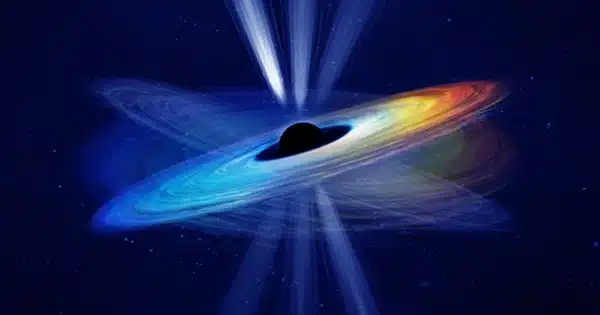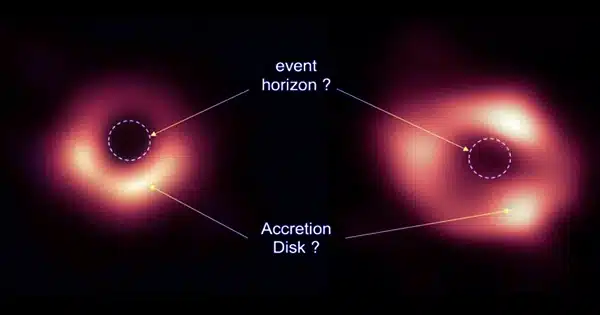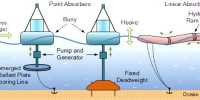The LIGO/Virgo experiment, a large-scale scientific endeavor headquartered at two sites in the United States, discovered gravitational waves for the first time in 2015. This significant milestone has encouraged scientists all across the world to develop new theoretical explanations for the behavior of black holes, based on evidence obtained by the LIGO/Virgo collaboration.
Researchers from Uppsala University, the University of Oxford, and the Université de Mons recently attempted to explain the dynamics of Kerr black holes, which are theoretically supposed to rotate at a constant pace using massive high-spin particle theory. Their research, published in Physical Review Letters, specifically posits that the dynamics of these revolving black holes are bound by the principle of gauge symmetry, implying that some changes to a physical system’s characteristics have no measurable effect.
“We pursued a connection between rotating Kerr black holes and massive higher-spin particles,” Henrik Johansson, the paper’s co-author, told Physics.org. “In other words, we modeled the black hole as a spinning fundamental particle, similar to how the electron is treated in quantum electrodynamics.”

The relationship between Kerr black holes and higher-spin theories was initially investigated in two separate publications released in 2019. The first study was conducted by Alfredo Guevara of the Perimeter Institute for Theoretical Physics and his European collaborators, and the second by Ming-Zhi Chung of National Taiwan University and his colleagues at Seoul National University.
Both earlier studies demonstrated that the well-known Kerr metric can be used for an indefinite range of higher-spin scattering amplitudes. These amplitudes were first measured by physicists Nima Arkani-Hamed, Tzu-Chen Huang, and Yu-tin Huang as part of a previous investigation.
“While these previous results are remarkable, they are not yet sufficient to accurately describe Kerr black-hole physics given upcoming experiments, such as the Einstein telescope, LISA, and the Cosmic Explorer,” Johansson wrote in a statement. “Some important missing information can be found within the black-hole Compton scattering amplitude, which is currently unknown for general spin.”
In their study, Ericsson and colleagues propose that the idea of gauge symmetry can be used to successfully restrict the dynamics of rotating black holes. The researchers demonstrated that large higher-spin gauge symmetry, based on a process first proposed by Ernst Stueckelberg and later codified by Yurii Zinoviev, may be utilized to duplicate Kerr scattering amplitudes described in prior works.
“We also showed that unidentified Compton scattering amplitudes are severely limited, even if achieving uniqueness requires further input,” Johansson went on to say.
“Higher-spin quantum field theories (QFTs) are notoriously difficult. Even low-spin QFTs, such as the spin-1 case of the Standard Model and the spin-2 case of General Relativity, are difficult, with formulations based on gauge symmetry and diffeomorphism symmetry (general covariance). These two symmetries can be viewed as the bottom two rungs on an endless staircase known as higher-spin gauge symmetry.”
While gauge symmetry is not required to describe the dynamics of huge particles, it has shown to be an effective tool for defining consistent interactions. The Higgs mechanism is one example of enormous gauge symmetry.
“Using massive higher-spin gauge symmetry for black holes, we could ensure that the spin degrees of independence are treated consistently and write down an effective Lagrangian,” Johansson explained. “The Lagrangian gives the correct higher-spin description of a Kerr black hole and has a reasonably good high-energy behavior.” The favorable high-energy behavior is not significant for classical black holes, but it gives some hope that the effective theory can capture certain quantum processes.”
Johansson and other researchers were the first to use higher-spin gauge symmetry on black holes. The results of their preliminary calculations are promising and could open the way for additional research into this link.
“While we expect that it will take some time before the full effective theory for rotating black holes becomes apparent, we think that higher-spin gauge symmetry will be a critical component in its formulation, similar to how gauge symmetry and diffeomorphism symmetry guided the theoretical framework of 20th-century physics,” Johansson said in a statement. “The whole Compton scattering amplitude for a Kerr black hole is yet unknown, but we have great hopes of being able to properly confine it in the future.
This includes understanding it for arbitrary spin orders as well as higher orders in Newton’s constant.”
To fully constrain the scattering amplitude of Kerr black holes, theoretical physicists studying huge higher-spin particles will need to work closely with those trying to solve the so-called Teukolsky equation, which is based on general relativity theory. Recent cooperation between these disparate scientific communities indicates that progress in this approach is on the horizon.
“In our next works, we would also like to further pursue the connection between black holes and their quantum properties, which are reminiscent of elementary particles,” Johansson said in a statement.















